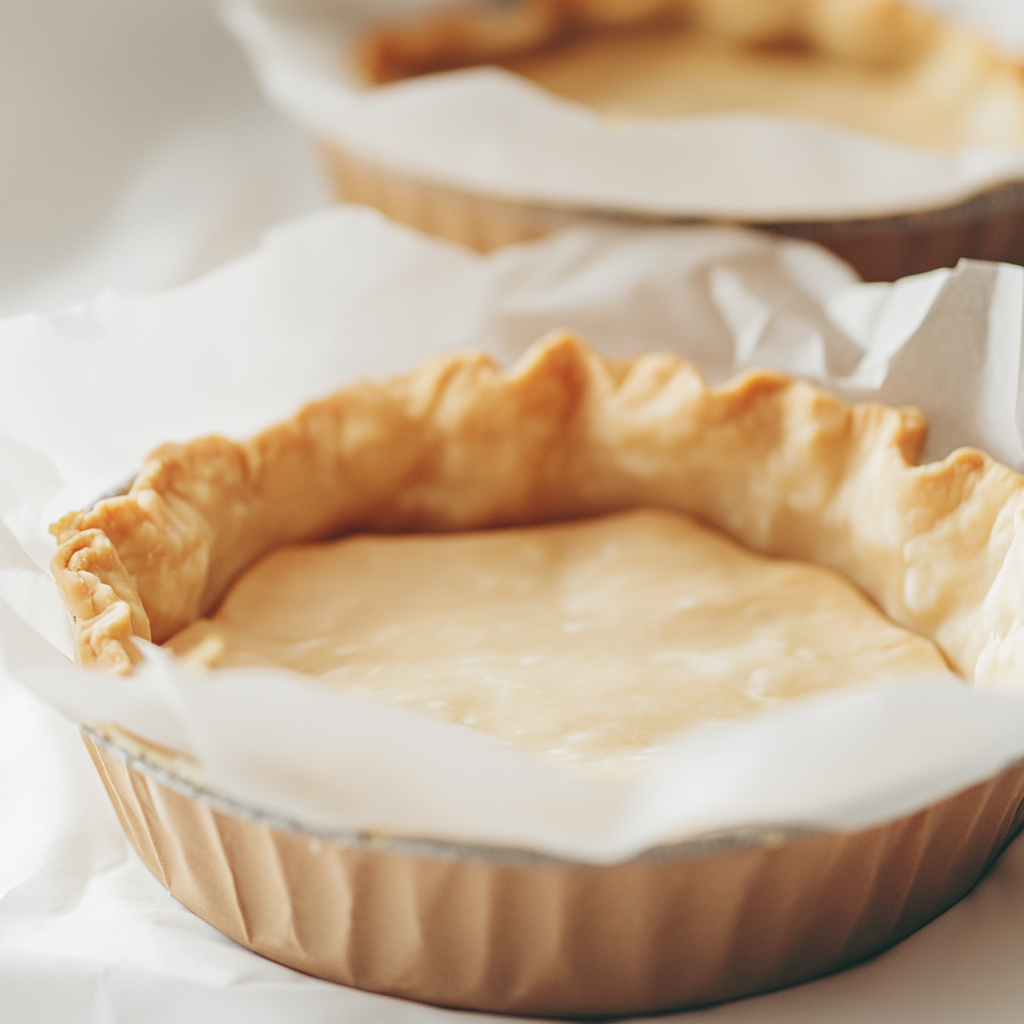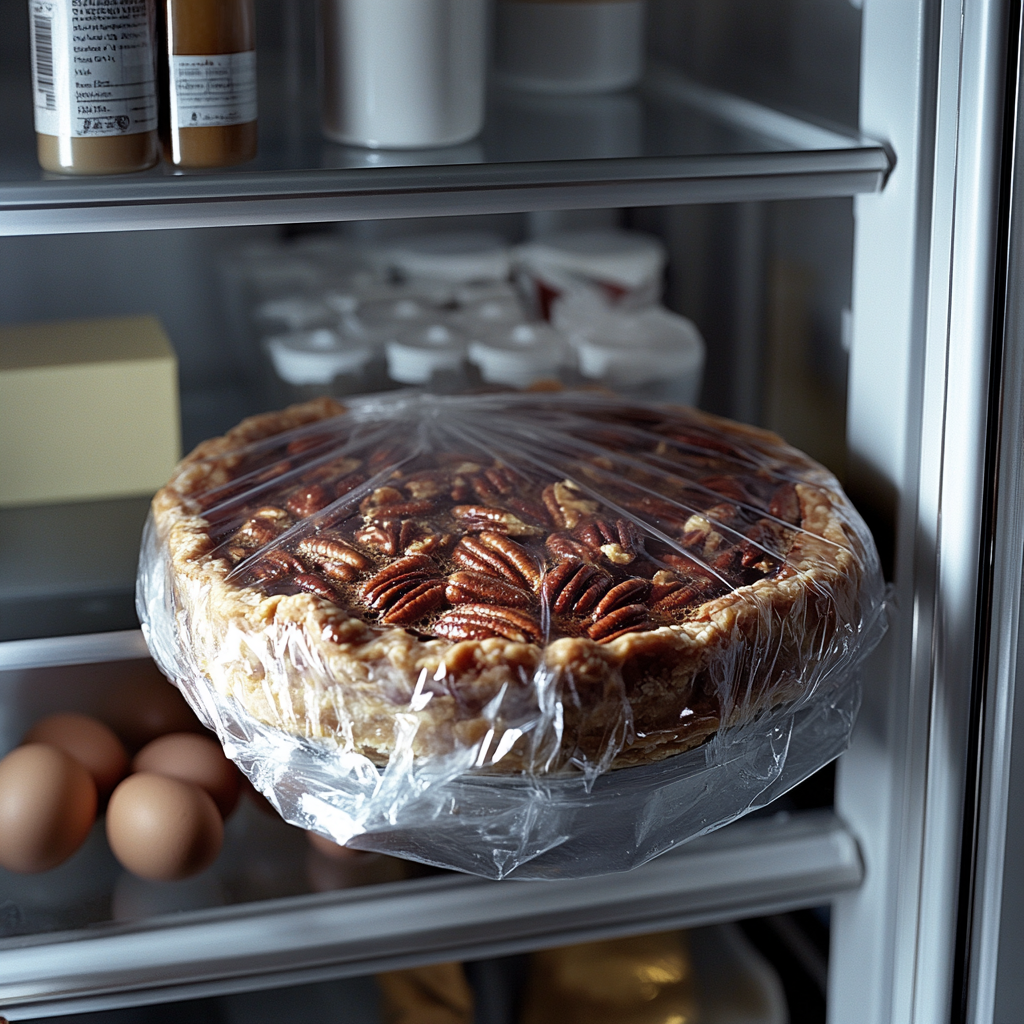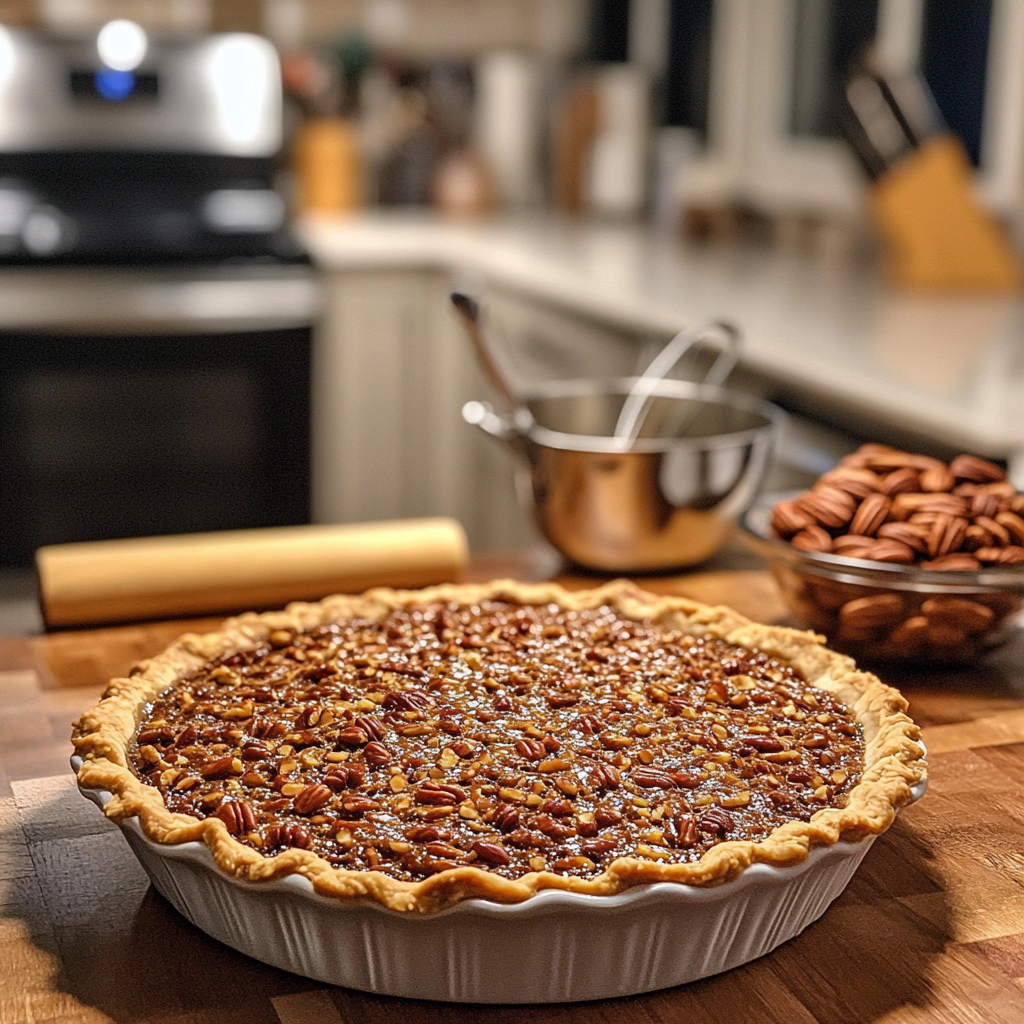Pecan pie is a quintessential dessert that embodies the flavors of warmth, tradition, and indulgence. Whether served at a family gathering, a holiday feast, or simply as a sweet treat, a perfect pecan pie is a culinary masterpiece that brings people together. However, many wonder, “How do you keep pecan pie from getting soggy?” The buttery crust, the gooey, caramelized filling, and the satisfying crunch of toasted pecans create a harmonious blend of textures and flavors that make this dessert a favorite among all age groups.
Table of Contents
Why Does Pecan Pie Get Soggy?
A soggy pecan pie can be a disappointment, turning what should be a crisp, buttery crust into a soft, unappealing base. Understanding why this happens involves delving into the role of ingredients, the effects of humidity and temperature, and common baking mistakes.
Role of Ingredients
The key ingredients in a pecan pie is eggs, sugar, corn syrup, and butter. Work together to create the pie’s signature filling. Eggs act as a binding agent, helping the filling set during baking. If the ratio of eggs to liquid ingredients is off, the filling may remain too loose, causing moisture to seep into the crust. Similarly, an excessive amount of liquid sweeteners like corn syrup or honey can lead to excess moisture, which compromises the crust’s texture.
The type of crust used also plays a role. A crust that hasn’t been pre-baked (blind-baked) lacks the protective layer needed to resist moisture absorption from the filling. Choosing a crust recipe designed for wet fillings and blind-baking it can help prevent sogginess.
Effects of Humidity and Temperature
Environmental factors, such as humidity and baking temperature, can greatly impact the pie’s texture. High humidity in the kitchen can introduce extra moisture into both the filling and the crust, making sogginess more likely. Baking at too low a temperature may result in an undercooked filling that fails to set properly, allowing liquid to seep into the crust.
Conversely, overbaking can cause the filling to become overly dense and crack, which might also lead to moisture redistribution that weakens the crust. Maintaining an optimal baking temperature and avoiding abrupt temperature changes is crucial.
If you're interested in methods to effectively manage moisture, you can reference the techniques used in Pecan Pie Cheesecake Bars to learn how layering and manipulating ingredients contributes to texture.
Common Mistakes
Some common mistakes that contribute to a soggy pecan pie include:
- Skipping Blind Baking: Failing to pre-bake the crust leaves it vulnerable to absorbing moisture from the filling.
- Improper Cooling: Cutting into the pie before it has cooled completely prevents the filling from setting, causing it to leak moisture into the crust.
- Incorrect Baking Time: Removing the pie from the oven too early results in an unset filling that remains too wet.
By paying close attention to ingredient ratios, environmental factors, and proper baking techniques, you can avoid the dreaded soggy pecan pie and achieve a dessert with the perfect balance of crispness and richness.
Preventive Measures: How Do You Keep Pecan Pie from Getting Soggy?
Creating the perfect pecan pie starts with selecting the right ingredients. High-quality ingredients ensure better flavor, texture, and consistency, while their freshness can make all the difference in preventing common issues like sogginess or an uneven filling.
High-Quality Pecans
Pecans are the star of this dessert, so their quality directly impacts the pie’s overall taste and presentation. Opt for fresh, whole pecans rather than pre-chopped or stale ones. Fresh pecans have a natural sweetness and a satisfying crunch that elevate the pie’s texture.
When shopping, look for pecans with an even color and a smooth texture, free of cracks or discoloration. Pecans that are past their prime can have an oily, rancid flavor, which will detract from the pie’s appeal. Toasting the pecans lightly before adding them to the pie can enhance their flavor and help them stay crisp even after baking.
Importance of Freshness in Filling Ingredients
The filling is the heart of a pecan pie, and its quality depends heavily on the freshness of its ingredients. Eggs should be fresh to ensure they properly bind the filling and prevent it from being overly runny. Old eggs can affect the filling’s structure, leading to issues with setting.
Similarly, the sweeteners used, whether corn syrup, maple syrup, or honey, should be of good quality and free from crystallization or off-flavors. Butter adds richness to the filling, so unsalted, high-quality butter is recommended for better flavor control.
Using fresh spices, such as cinnamon or nutmeg, if your recipe calls for them, can also make a noticeable difference. Stale spices lack the aromatic punch needed to enhance the pie’s flavor profile.
Incorporating high-quality, fresh ingredients not only improves the taste but also ensures the pie’s structural integrity. By prioritizing the selection of ingredients, you set the foundation for a pecan pie that looks, tastes, and feels like perfection.
Key Characteristics of a Well-Baked Pecan Pie
Texture and Firmness
The hallmark of a perfectly baked pecan pie is a filling that is set but not overly dense. The filling should hold its shape when sliced, offering a smooth and velvety texture without being too runny or overly gelatinous. This is achieved by correctly balancing the liquid ingredients, ensuring the eggs are properly whisked, and baking at the optimal temperature.
The crust also plays a critical role in the texture of the pie. It should be crisp and buttery, providing a sturdy base that supports the rich filling without becoming soggy. A blind-baked crust can help achieve this, adding a layer of protection against moisture absorption.
Balance Between Crunch and Softness
A great pecan pie is defined by the delicate balance between its crunchy pecan topping and the soft, gooey filling beneath. The pecans should be toasted to enhance their natural nuttiness and maintain their crisp texture, contrasting beautifully with the luscious filling.
The interplay of textures creates a delightful eating experience: the crunch of the pecans gives way to the creamy, caramel-like filling, all supported by the crisp crust. This balance ensures that every bite is a symphony of complementary sensations, making the pie truly irresistible.
When these characteristics are achieved, a pecan pie transitions from a simple dessert to a culinary masterpiece, blending texture, firmness, and flavor into a slice of perfection.
Preventive Measures: Choosing the Right Ingredients
Creating a flawless pecan pie begins with selecting top-notch ingredients. The quality and freshness of the ingredients directly influence the taste, texture, and appearance of the final product. Choosing wisely ensures that every slice of your pie is as delicious and visually appealing as it should be.
1. High-Quality Pecans
The pecans are the centerpiece of this classic dessert, so their quality is critical. Always opt for fresh, whole pecans, as they provide a superior crunch and a nutty, sweet flavor. Avoid pre-chopped pecans, which can be dry or stale, and steer clear of pecans with a dull appearance or an off smell, as they may have gone rancid.
Fresh pecans can elevate the pie, adding a rich, buttery crunch that complements the gooey filling. To further enhance their flavor and ensure they maintain their texture during baking, lightly toast the pecans beforehand. This simple step brings out their natural oils and intensifies their nutty aroma, making every bite more satisfying.
2. Importance of Freshness in Filling Ingredients
The filling is the heart of a pecan pie, and its quality depends on the freshness of each ingredient. Eggs, a key component, should be fresh to ensure they provide the structure needed for the filling to set properly. Fresh eggs also contribute to a smoother, creamier texture. If eggs are past their prime, the filling might fail to bind, resulting in a pie that is too loose or runny.
Sweeteners like corn syrup, honey, or maple syrup are crucial for the pie’s signature richness and gooeyness. Use high-quality sweeteners free from crystallization or any odd flavors. Butter, another core ingredient, should be fresh and unsalted to enhance the pie’s overall richness without overpowering its natural sweetness.
Spices like cinnamon, vanilla, or nutmeg, if included in your recipe, should also be fresh. Stale spices lack the potency needed to add depth to the pie’s flavor. Using fresh, aromatic spices ensures that your pie has a warm and inviting taste.
This article: “Is There a Substitute for Dark Karo Syrup for Pecan Pie?” ", offering you advice on alternative sweeteners that may impact moisture control.
3 .Preparing the Perfect Pie Crust

A great pecan pie starts with a well-prepared crust that is both flavorful and structurally sound. Achieving the perfect crust involves selecting the right fat, using proper prebaking techniques, and ensuring the crust is of an ideal thickness.
Using the Right Fat
The choice of fat significantly impacts the texture and flavor of the crust. Butter is a popular choice for its rich flavor and flakiness, while shortening can add stability and tenderness. For the best of both worlds, consider a combination of butter and shortening. Ensure the fat is cold, as this helps create a flaky texture by preventing it from fully incorporating into the flour.
Prebaking Techniques
Prebaking, or blind baking, is essential for pecan pies, as it prevents the crust from becoming soggy. This process partially cooks the crust before adding the filling, ensuring it remains crisp and sturdy. Using pie weights or dried beans during prebaking prevents the crust from puffing up.
Choosing the Right Thickness
The crust’s thickness is a balancing act. Too thin, and it may break or fail to hold the filling. Too thick, and it may overshadow the pie’s flavors. Aim for a uniform thickness of about 1/8 inch to achieve a crust that is both delicate and durable.
For tips on quick, no-fuss recipes: “No-Bake Pecan Pie Cheesecake” as an example of an alternative that eliminates baking-related moisture issues.
The Role of Blind Baking
Blind baking is a crucial step in ensuring your pie crust is perfectly baked and free from sogginess.
What is Blind Baking?
Blind baking involves pre-baking the pie crust without the filling. This technique creates a barrier between the crust and the moist filling, ensuring the crust stays crisp.
1.Step-by-Step Process for Blind Baking
- Roll out the dough and transfer it to the pie dish.
- Line the crust with parchment paper or aluminum foil.
- Fill with pie weights or dried beans to keep the crust flat.
- Bake in a preheated oven at 375°F (190°C) for 10-15 minutes.
- Remove the weights and parchment, then bake for another 5-7 minutes until lightly golden.
Managing Moisture Levels
Properly managing moisture is vital to avoid a soggy pie.
Tips for Preparing the Filling
When making the filling, avoid excessive mixing, as this can introduce air bubbles and lead to uneven baking. Use fresh, high-quality ingredients and ensure they are at room temperature for smooth incorporation.
Using Starch or Flour to Absorb Moisture
Incorporate a small amount of cornstarch or flour into the filling mixture. These ingredients act as thickeners and help absorb excess moisture, creating a more stable filling that won’t seep into the crust.
Balancing Liquid Ingredients
The filling’s consistency depends on achieving the right balance of liquid ingredients.
Importance of Proper Ratios
Follow the recipe’s ratios closely to ensure the filling sets correctly. Eggs, sweeteners, and fats must be balanced to achieve the desired texture.
Avoiding Excessive Syrup
Using too much syrup can make the filling overly sweet and runny. Measure carefully and consider substituting some corn syrup with honey or maple syrup for a nuanced flavor.
Baking Techniques and Post-Baking Care
Perfect baking techniques and proper post-baking care are essential for a flawless pecan pie.
1. Baking Temperature and Timing
Achieving the perfect bake requires careful attention to temperature and timing.
- Recommended Oven Settings: Bake at 350°F (175°C) for 50-60 minutes. This allows the filling to set without overcooking.
- Checking Doneness without Overbaking: The filling should jiggle slightly in the center but not slosh when the pie is moved. Overbaking can cause the filling to crack or become overly firm.
Tips for Even Baking
Even baking ensures the pie is cooked uniformly throughout.
Using a Baking Stone
Place a baking stone in the oven to create consistent heat distribution. This helps the crust bake evenly and prevents underbaking.
Rotating the Pie for Uniform Heat
Rotate the pie halfway through baking to ensure all sides are exposed to even heat, avoiding hot spots that can lead to uneven cooking.
Cooling and Storing the Pie Properly
Proper cooling and storage are essential to maintain the pie’s texture and flavor.
Allowing Proper Cooling
Let the pie cool completely on a wire rack for at least 2-3 hours. Cutting the pie too soon can cause the filling to spill and ruin the presentation.
Storage Tips to Maintain Freshness
Store the pie in an airtight container at room temperature for up to two days or refrigerate for up to four days. To reheat, place the pie in a 300°F (150°C) oven for 10-15 minutes to refresh its texture without overcooking.

By following these techniques, your pecan pie will be a masterpiece of flavor, texture, and visual appeal.
FAQs: How Do You Keep Pecan Pie from Getting Soggy?
Why does my pecan pie filling sink?
The filling may sink if the eggs and sugar are not properly mixed or if the pie is baked at too low a temperature. To prevent this, whisk the ingredients until fully combined and bake at a consistent temperature, ensuring the filling sets evenly.
How do I reheat a pecan pie without making it soggy?
To reheat a pecan pie, place it in a preheated oven at 300°F (150°C) for 10-15 minutes. Avoid using a microwave, as it can introduce moisture, making the crust soggy. Reheating in the oven helps restore crispness and warmth.
Can I make pecan pie ahead of time?
Yes, pecan pie can be made ahead of time. Bake the pie up to two days in advance and store it at room temperature in an airtight container. For longer storage, refrigerate the pie for up to four days or freeze it for up to two months.
Should I refrigerate pecan pie?
While pecan pie can be stored at room temperature for up to two days, refrigeration is recommended for extended freshness. Cover the pie tightly and refrigerate it for up to four days to maintain its flavor and texture.
What can I use instead of corn syrup in pecan pie?
You can substitute corn syrup with alternatives like maple syrup, honey, or golden syrup. These options add a unique flavor to the pie while maintaining the sticky, gooey texture characteristic of pecan pie.
How do I fix an undercooked pecan pie?
If the pie is undercooked, return it to the oven at 350°F (175°C) and bake for an additional 10-15 minutes. Cover the edges with aluminum foil to prevent over-browning, and ensure the filling jiggles slightly in the center when done.

